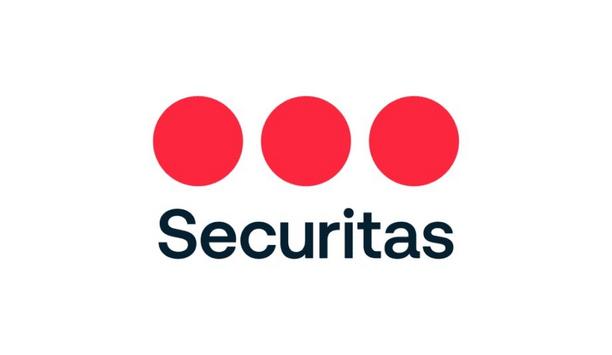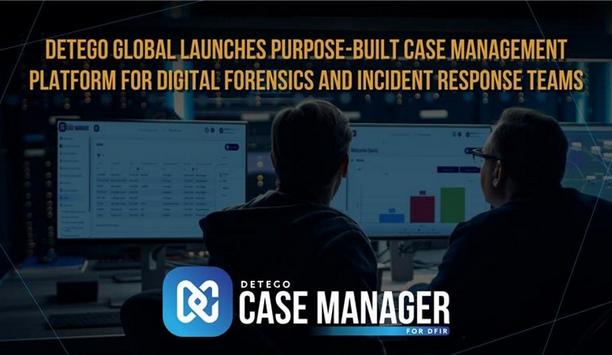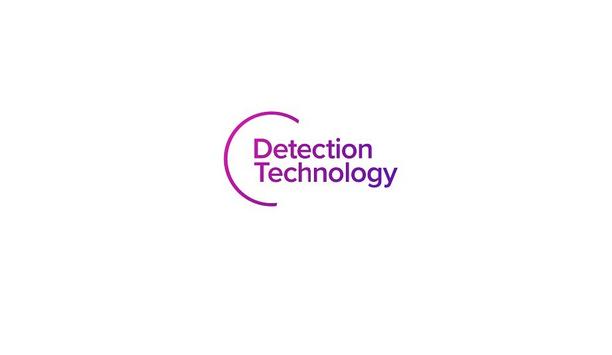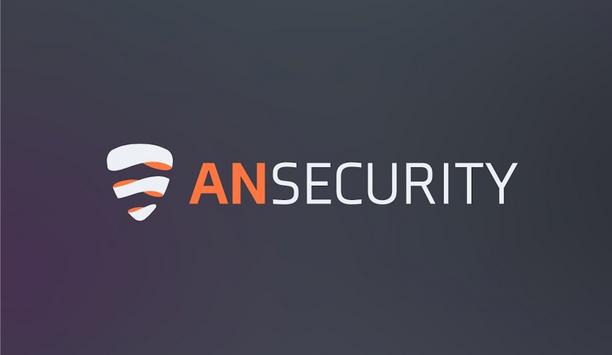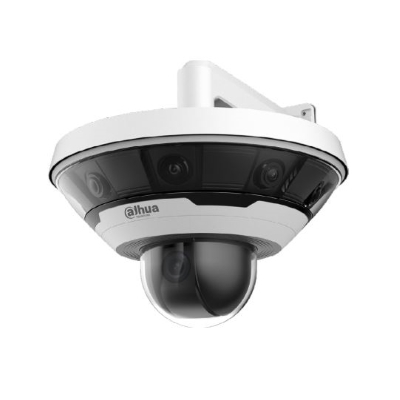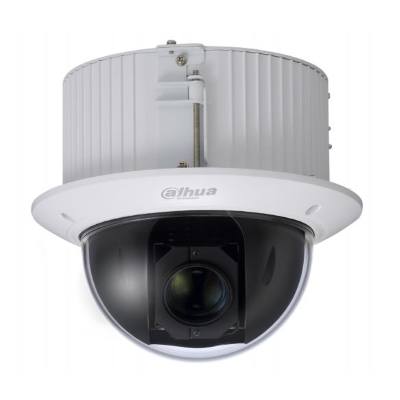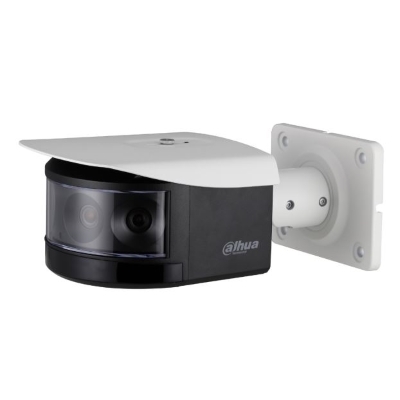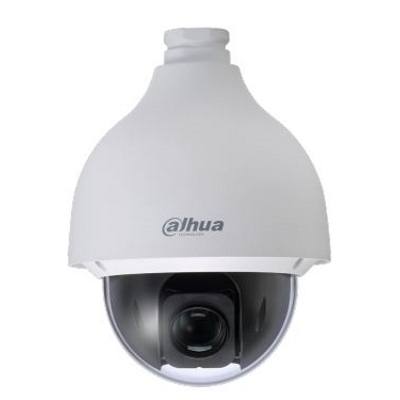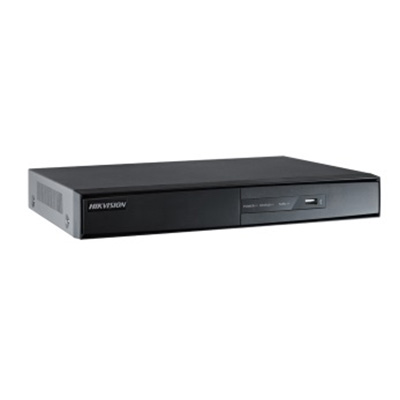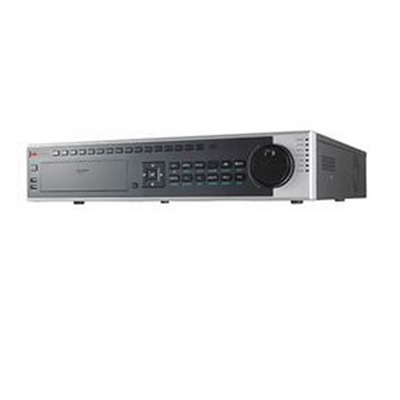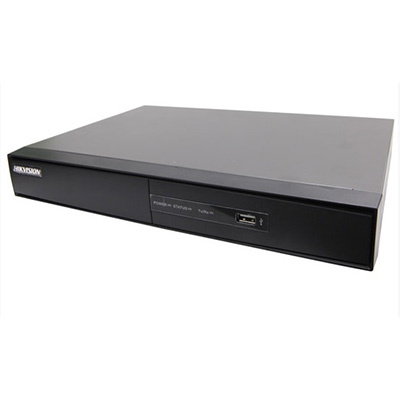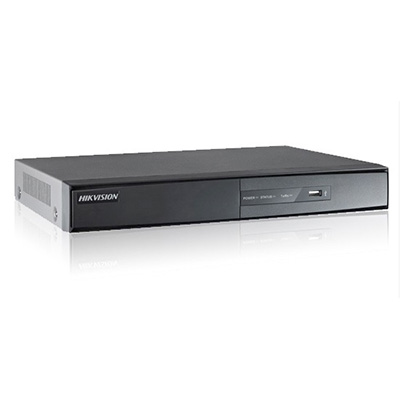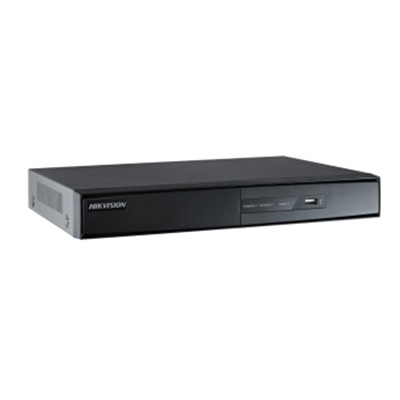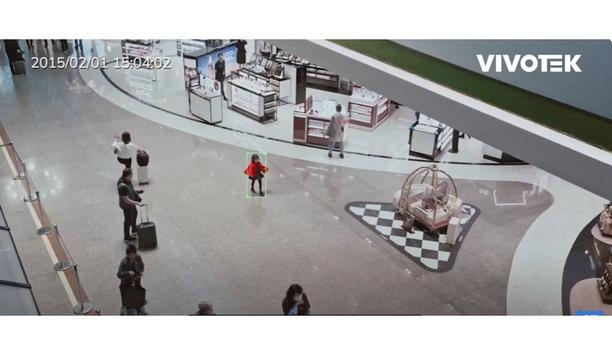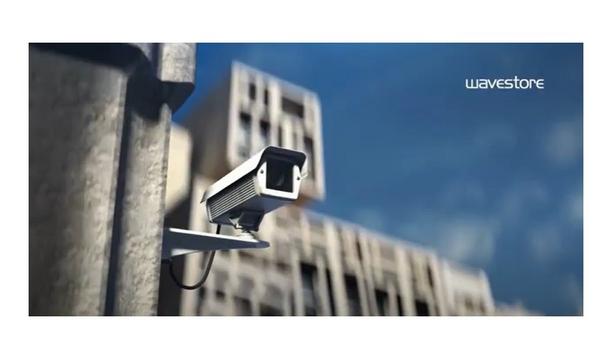Security service
WatchGuard® Technologies now announced that its endpoint security solution delivered outstanding performance in the latest MITRE ATT&CK® Enterprise Round 7 (ER7) Evaluation. The results highlight WatchGuard’s ability to combine strong threat prevention with low-noise detection, giving Managed Service Providers (MSPs) a reliable and efficient way to deliver high-quality security services at scale. WatchGuard’s commitment In the Windows “Hermes” scenario, Wat...
The 19th Real Estate Development Summit Saudi Arabia – Luxury Edition successfully concluded after two days of high-level exchange, strategic collaboration, and global networking, bringing together more than 800 leaders, investors, and decision makers shaping the future of the Kingdom’s rapidly evolving built environment. Held under the theme “Together Towards Tomorrow,” the summit showcased the unprecedented transformation underway across Saudi Arabia, where t...
Iris officially launches today, introducing a platform that transforms how cameras are controlled, and productions are managed. By turning virtually any PTZ camera into a software-connected, remotely controlled device, Iris eliminates the traditional constraints of camera operation, such as hardware dependencies, inconsistent control, and the lack of on-site crews. The platform removes long-standing pain points for production teams: fragmented control tools and protocols across brands, the need...
Balancing operational efficiencies and customer satisfaction with costs, resources, and legislative obligations is a challenge faced by every security services provider offering keyholding and alarm response. While mobile security operations must adhere to strict compliance, with BS 7984 standard and SIA licensing for guards at the very core of the operations, security providers are increasingly contending with a wider range of regulations. Among the most pressing are sustainability requirement...
The Security Industry Authority is encouraging the public to stay vigilant and report issues to security this winter as part of its ‘Safe Season Together’ campaign. At the heart of the campaign is the recognition that public safety is a collaborative effort. As the festive period begins, the Security Industry Authority is reminding everyone of the important role they play in keeping themselves and others safe. Highlighting the need for those out and about in December and January to...
Securitas Technology, a world pioneer and global provider of security, health, and safety technologies, is proud to announce the acquisition of Sonitrol Ft. Lauderdale and Level 5 Security Group. This strategic move reinforces Securitas Technology’s commitment to delivering client-centric solutions and expanding its geographic footprint to better serve clients across North America. Best-in-class security solutions “This acquisition aligns with our focus and commitment to deliver...
News
SAGE Integration is excited to announce the newest office in Ripley, Tennessee, located at 567 Highway 51 South, Ripley, TN 38063. The latest expansion continues to enhance SAGE's ability to serve its expanding regional client base and address the rising demand for advanced electronic security solutions in the region. The new Ripley office will bolster local operations, enabling quicker response times, improved service, and deeper engagement with clients and the community while supporting our National Clients throughout the area. SAGE Integration's ongoing commitment "Our presence in Ripley, TN, marks a significant milestone for SAGE Integration," said John Nemerofsky, Chief Operating Officer. "This location allows us to deliver even greater value to our clients and strengthen our relationships within the region." The Ripley office demonstrates SAGE Integration's ongoing commitment to responsive service and reinforces its role as a trusted, innovative security integration partner nationwide.
Continuing its global expansion plan, and its commitment to the African continent, Integrity360 has acquired Redshift, a well-established and highly regarded cyber security services company operating out of Johannesburg in South Africa. The terms of the transaction were not disclosed. The acquisition comes on the back of Integrity360’s considerable investment in the region following the 2024 and early 2025 acquisitions of the Grove Group and Nclose. The acquisition brings Integrity360 resources in South Africa to a team of over 230 employees serving the needs of customers across Africa. Key locations Integrity360’s operations in Johannesburg and Cape Town also serve as key locations for its integrated “global SOC” (Security Operations Centre) operation which delivers a comprehensive suite of managed services, including EDR (Endpoint Detection and Response), XDR (Extended Detection and Response), and MDR (Managed Detection and Response) solutions for both local and international customers. Founded in 2015, Redshift has developed a reputation for service excellence amongst its customers, specifically for cyber security testing but also a selection of other specialized activities including cybercrime investigations, anti-fraud advisory, scammer group takedowns, cyber intelligence, and a focused range of managed services. Redshift adds approx. 50 customers including many leading South African finance, banking and telecommunications organizations, and an additional team of approx. 40 employees to the group. Regional center of excellence Redshift will serve as a regional center of excellence for the group for cyber security testing, and also be connected up with the existing Integrity360 cyber advisory and managed services teams operating in the region. Integrity360 will invest in the development and expansion of the business utilizing the considerable resources across the group. Redshift customers will benefit from access to Integrity360’s highly extensive and complementary cyber services portfolio encapsulating cyber risk and assurance, highly comprehensive 24/7 incident response and forensics services, infrastructure and technology services, PCI compliance, OT (operational technology) consulting and solutions, and a highly comprehensive range of cyber security managed services ranging from managing cyber infrastructure, to Managed SASE (Secure Access Service Edge), Managed CTEM (Continuous Threat Exposure Management), and a full suite of innovative XDR/MDR solutions. Innovative range of services Integrity360’s innovative range of services have been recognized five times in a Gartner market guide most recently for Incident Response and Forensic services. Ian Brown, Executive Chairman at Integrity360 commented “We are very excited to be welcoming Sean, Cailan and the entire Redshift team to Integrity360.” “The reputation and expertise they have developed since their formation in 2015 is highly impressive and we are looking forward to helping them provide an enhanced set of services to their customers and expanding further in the African market over the coming years”. Significant moment Sean Howell and Cailan Sacks Directors of Redshift commented: “This is a significant moment for us, and we could not be more delighted that Redshift is joining Integrity360 and continuing the growth and development of the business that was initially started by Sean a decade ago.” “Thanks to the support of our customers and employees, Redshift has grown enormously during that time, and having spent considerable time with Ian, and the wider Integrity360 leadership team, we are confident will continue to do so being part of the Integrity360 group.” “We are excited about the future for us as an organization, for our people and in particular for what the enhanced group can provide our customers moving forward.”
Securitas UK and Hays Travel are proud to celebrate over 10 years of working together to deliver safe, secure, and welcoming environments across Hays Travel’s nationwide network of retail branches. Since 2015, Securitas has been a trusted security partner to Hays Travel, providing a tailored service that supports the company’s commitment to customer service. From alarm response to mobile patrols, the partnership has evolved to meet the changing needs of the UK’s largest independent travel agent. Range of scenarios The partnership supports over 530 locations across the UK with alarm response. It ensures that out of hours, or when buildings are vacant and there are incidents such as an intruder, the alarm response results in an emergency key holder attending the site and resolving the incident. This could be a wide range of scenarios, including a break-in, a false alarm due to something being left unattended on the premises, or the site requiring maintenance and repair, as the result of an incident. With a deep and expansive UK estate, Hays Travel chose Securitas for its self-delivery model—free from third-party involvement. It ensures a consistent, high-quality service across all client sites. Supported by a nationwide network of branch managers it enables the delivery of tailored solutions with speed, accountability and local expertise. Trust, innovation, and shared values Rapid response across Hays Travel’s UK estates to callouts enables clients to maintain staff productivity, reduce operational disruptions, and achieve cost savings. By responding swiftly to alarm activation, not only is it a theft deterrent but also mitigates insurance liabilities, through reliable out-of-hours coverage. Securitas has played a key role in developing onsite behavioral analysis, helping teams better understand patterns, enhance safety, and improve response strategies. Alex Davis, Chief Commercial Officer, Securitas UK said, “We are delighted to mark this milestone with Hays Travel. Over the past decade, our teams have built a strong, collaborative relationship rooted in trust, innovation, and shared values. It’s been a privilege to support Hays Travel’s growth and success.” High standards of safety and service Peter Robinson, Head of Property at Hays Travel, said, “Our trusted partnership with Securitas has helped us to maintain high standards of safety and service across our retail estate. We are committed to caring for our people, customers and the communities where we operate and Securitas has been instrumental in us achieving this." “Their professionalism, responsiveness, and understanding of our business have made a real difference. We look forward to continuing this journey together.” The partnership will continue to focus on delivering value through smart security solutions that support Hays Travel in making travel accessible, enjoyable, and safe for all.
Detego Global, the company behind the award-winning Unified Digital Forensics Platform, is proud to announce the launch of Detego Case Manager for DFIR, a powerful, purpose-built platform designed to meet the evolving demands of digital forensics and incident response (DFIR) teams worldwide. Developed in close collaboration with investigative professionals, Detego Case Manager for DFIR addresses the real-world challenges of managing high-volume, complex digital investigations across multiple locations and touchpoints, whether on scene or in the laboratory. Combining streamlined workflows Detego Global’s new platform delivers full-spectrum case management from a tailored perspective. It brings together evidence tracking, audit logging, workflow automation, task and performance management, compliance controls, and more, all within one secure and highly auditable system. Team leaders and administrators can access instant metrics on all cases within seconds, providing real-time visibility into efficiency and enabling swift, data-backed decision-making. “We’ve worked hand in hand with digital forensic investigators, incident responders, law enforcement, military, and corporate professionals to design a platform that truly meets the operational demands they face every day,” said Alex Kirk, Global Sales Director of Detego Global. “Detego Case Manager for DFIR reflects the practical input of experts worldwide, combining streamlined workflows with powerful data insights and compliance features that modern investigations require.” Audit friendly investigation management Key features include: Fully compliant/audit friendly investigation management with timestamped notes and specifics, full audit trails, and an unbroken chain of custody. Customisable, pre-built workflows designed by DFIR experts and a visual workflow builder to streamline and accelerate investigations. Centralised evidence and data collection, unifying physical and digital exhibits, ISO-compliant forms, and seamless integration of evidence from third-party tools. Smart task management with Kanban-style tracking, automation, role-based permissions, escalation paths, and collaboration tools for full visibility and accountability. Entity management that maps and traces relationships across people, devices, locations, and cases to uncover hidden links and patterns. Built-in insights and reporting, including real-time performance metrics, case timelines, dashboards, and logs to support informed decision-making, efficient resource allocation, and early identification and elimination of bottlenecks. Cloud-hosted solution The platform is available as an on-premise or cloud-hosted solution and includes optional add-ons such as custom workflow development and database integrations. Detego Case Manager for DFIR can be deployed rapidly, with tailored onboarding, user guides and ongoing support to ensure immediate operational impact. A fully functional 30-day trial is also available. Detego Case Manager for DFIR sets a new benchmark in digital investigation management, delivering control, clarity, and consistency across every stage of the forensic life cycle.
Detection Technology, a global pioneer in X-ray detector solutions, has been awarded the EcoVadis Bronze Medal on its very first assessment — earning an impressive debut score of 63 points that reflects an exceptional initial ranking. Achieving bronze on the first attempt marks above-average ESG performance and represents a significant milestone in the company’s ongoing commitment to responsible and sustainable business practices. “Most first-time companies score around 48 points, and only about 3% of them exceed the advanced 65-point level — a threshold we came very close to with our strong debut score of 63 points. On average, companies outperform the 63-point level on their fourth rating. Detection Technology’s Bronze Medal on its first attempt is truly exceptional,” said Kai Utela, Vice President of Operations at Detection Technology. Bronze-level recognition The bronze-level recognition places Detection Technology among the top 35% of all companies assessed globally over the past twelve months and reflects a performance that exceeds that of 63% of companies rated during the same period. This achievement confirms that the company has established a solid sustainability management system and is performing above average in key areas of environmental, ethical, and social responsibility. Ongoing development and improvement “Our EcoVadis rating demonstrates that we are truly a trusted partner, ensuring that our customers and other stakeholders do not need to worry about sustainability risks. They can rely on our business operations meeting strong sustainability criteria, as this recognition shows our above-average commitment compared to our peers.” “The assessment also enables us to benchmark our performance against other companies and continue our sustainability journey in the right direction, with a clear focus on ongoing development and improvement.” Corporate social responsibility Detection Technology selected EcoVadis as its sustainability assessment partner due to the platform’s global recognition, and reliability. EcoVadis provides an easy-to-understand framework for measuring and communicating sustainability performance, enabling the company to transparently share its progress with business partners and the investor community. Detection Technology’s approach to corporate social responsibility is firmly grounded in its vision, mission, and values. The company’s sustainability practices are business-driven and closely tied to its culture, which emphasizes exceptional customer experience and excellence in quality. Sustainability framework Its commitment to responsible conduct is reflected in its adherence to certified ISO management systems and compliance with the Responsible Business Alliance (RBA) Code of Conduct. “EcoVadis aligns seamlessly with our sustainability framework. The principles of both RBA and EcoVadis are founded on the same international standards. This alignment makes EcoVadis an effective tool for measuring and communicating Detection Technology’s compliance with RBA expectations and for ensuring the company continues to evolve in the right direction.”
MARCH has opened a new regional hub at Meadowhall Business Park in Sheffield, marking a major investment in Yorkshire’s growing economy and supporting the company’s continued expansion. The new site replaces the company’s former Chesterfield and Leeds offices, bringing teams together under one roof to create a collaborative environment designed for innovation, training and growth. With excellent transport links via train, tram, bus and road, the location provides easy access for staff and customers across the region. The modern facility includes dedicated meeting rooms and a large test space for hands-on technical work, all designed to enhance the employee experience and support delivery for customers. Significant investment “This move represents a significant investment in both our people and the region,” said Christopher Kehoe, CEO at MARCH. “Bringing our teams together in Sheffield gives us the opportunity to collaborate more closely, share ideas and strengthen our culture. It’s about creating an environment where talent can grow and where innovation happens naturally.” The new office reflects MARCH’s continued investment in people and capabilities across the North. Sheffield is recognized as a center of excellence for engineering and technology education, producing highly skilled graduates across a range of disciplines. Its strong academic base and established industrial links provide MARCH with access to a deep pool of technical talent, reinforcing the company’s commitment to developing digital expertise in the region. Newly launched digital apprenticeship program The Sheffield hub will also support the company’s newly launched digital apprenticeship program, which has been designed and fully funded by MARCH to address the national shortage of automation and control systems skills. Delivered through the MARCH Academy, the initiative provides a structured training route that blends academic study with practical application. Members of the 2025 apprenticeship intake will be based at the new office, combining academic study with hands-on project experience under the guidance of experienced mentors. Developing future-ready skills The program forms part of MARCH’s wider strategy to develop future-ready skills and create a consistent training pathway across its regional network. “We believe this investment allows us to serve our customers more effectively,” added Christopher Kehoe. “The Sheffield hub connects our expertise across the North, helping us deliver faster, more consistent results and giving customers direct access to the full range of our capabilities.” The opening of the Sheffield hub underlines MARCH’s ongoing investment in regional development, helping to create high-quality digital roles and supporting the wider local economy.


Expert commentary
Physical security isn’t a one-time project or a static system. It’s a dynamic, ongoing process and program that requires constant attention and management to remain effective. While the initial implementation of a security system — what we often call Day 1 — is critical, the ongoing maintenance, service, and adjustments made after systems are operational, or Day 2, are equally essential. Security program long-term Organizations that fail to focus on post-occupancy security operations risk falling victim Organizations that fail to focus on post-occupancy security operations risk falling victim to a phenomenon known as "program drift," where systems and policies gradually deviate from their intended standards over time. To manage your security program long-term, you often need an outside perspective. By engaging a security partner to provide managed services, organizations can achieve a strategic solution for maintaining their security programs' integrity, effectiveness, and efficiency over the long term. Let’s look at the reasons why. Moving beyond Day 1 Day 1 is the milestone moment when a security system is launched — whether it’s a new system, an upgraded access control platform, or a transition to advanced surveillance technology. On this day, all components align with established policies and standards. Yet, Day 1 is only the beginning of a security program's lifecycle. What happens on Day 2 and beyond is often where the real work begins. Without a robust plan for ongoing service and maintenance, security systems can quickly fall out of compliance. Policies become outdated, configurations drift, and vulnerabilities emerge. This gradual degradation — program drift — occurs not due to neglect but as a natural result of decentralized management; competing operational priorities; and the lack of dedicated, knowledgeable resources to oversee the systems. Avoiding program drift Drift is particularly pronounced in physical security because, unlike other building systems Program drift occurs when a security program’s elements — such as access controls, camera placements, or intrusion detection settings — gradually become misaligned from their intended standards. Think of a straight line representing perfect compliance on Day 1. Over time, various factors push individual components off this line. Left unchecked, these deviations accumulate, leading to significant vulnerabilities and deferred remediation costs that would be much easier to manage and predict with a more proactive approach. Drift is particularly pronounced in physical security because, unlike other building systems such as lighting or HVAC, security measures are often viewed as inconveniences. Even when systems function as designed, features like turnstiles, visitor management, or additional access controls may face pushback for being "in the way" of daily operations. This resistance and the Day 2 problems that often result — along with the lack of centralized oversight — exacerbate the risk of misalignment and ongoing inefficiencies. Why centralized post-occupancy management matters Post-occupancy management is critical for maintaining the long-term health of a security program. Facility managers, who are often tasked with overseeing security systems, may lack the technical expertise or bandwidth to handle the complexity of modern security infrastructure. Partnering with dedicated professionals to help meet these responsibilities ensures systems are managed effectively and vulnerabilities are addressed proactively. It also helps improve system availability and uptime, accelerate break/fix response and resolution times, lower ownership costs by reducing unnecessary and repeat service dispatches, and achieve a more consistent end user experience. Moreover, centralized management provides a consistent framework for handling security systems across multiple sites. This consistency is vital in preventing Program Drift, ensuring that local variations or individual decisions do not undermine the organization’s overall security posture. The case for managed services Hiring outside consultants offers a proactive and professional approach to mitigating program drift Hiring outside consultants offers a proactive and professional approach to mitigating program drift. Specialized providers have the expertise, tools, and resources to manage complex security systems effectively and ensure those systems remain aligned with organizational policies and performance expectations. By acting as a dedicated external resource and interfacing regularly with your security team, your consultant can help you build, manage, and optimize a variety of services that help keep your program on track. These services range from system health and availability management (break fix); move, add change management; system configuration administration; and program/project management offices. Key benefits in the following areas Let’s look at how a managed services a partner can yield key benefits in the following areas: Standards compliance. Centralized management ensures that security systems and processes remain in compliance with established policies and standards, reducing vulnerabilities caused by ad hoc changes or decentralized management. Operational efficiency. Managed services streamline maintenance and support workflows, minimize downtime, and ensure quick issue resolution. Enhanced security resilience. Proactive monitoring and maintenance reduce the likelihood of system failures and improve overall system reliability. Standardized processes for move-add-change (MAC) activities ensure that security configurations remain consistent across locations. Cost savings. Outsourced providers help organizations optimize resources, avoid errors, and benefit from economies of scale in service delivery. Strategic focus. Outsourcing also allows internal teams to shift their focus from routine operational tasks to higher-value activities, such as strategic planning, threat analysis, and incident response. Long-term value of security investments While Day 1 success is the foundation of a comprehensive program, what happens on Day 2 determines your ability to realize the long-term value of your security investments. As the complexity of security challenges grows, leaders must prioritize sustained management and professionalized oversight to protect their organizations, making the conversation around post-occupancy security more critical than ever. By adopting innovative strategies, implementing mature toolsets and processes, and leveraging specialized expertise, organizations can ensure their programs remain robust, aligned, and prepared to meet the challenges of tomorrow.
The days of being reactive are over. That’s right, we as an industry, can no longer afford to be reactive. As threats evolve, the need for proactive security is critical. While traditional methods, including physical barriers and security personnel, are still necessary, the future of our approach is built on the backs of emerging technologies. Substantial vulnerabilities As an industry, we’ve operated reactively for decades, it has been common for security teams to address threats only after they occur. The growing risk landscape proves that this approach has significant limitations. Human oversight, delayed responses, and the inability to monitor large areas have exposed substantial vulnerabilities. Emergence of AI AI enables real-time monitoring, advanced data analysis, and more accurate risk detection Times are changing though and it’s largely due to the emergence of AI. AI is revolutionizing the security landscape by making technology smarter. It enables real-time monitoring, advanced data analysis, and more accurate risk detection. This ensures a higher level of security and safety, minimizing potential incidents' impact while enhancing overall safety. Focus on strategic aspects AI's ability to process vast amounts of data quickly and accurately is, quite frankly, a game-changer. It can identify patterns and anomalies that can provide stakeholders with critical insights to respond in a more prepared manner. By automating routine tasks and highlighting potential issues, AI also allows operators to focus on more complex and strategic aspects of security management, rather than responding to false alarms. The future is AI The future of security lies in AI. The Security Industry Association (SIA) has recognized AI as one of the top security megatrends in 2024. However, the challenge is not adopting AI, it is about effectively using it to enhance security. AI can enhance video surveillance by improving object detection and enabling real-time, informed responses AI systems can easily integrate with existing infrastructures, providing a layered defense that combines traditional methods with more modern technology. For example, AI can enhance video surveillance by improving object detection, reducing false alarms, and enabling real-time, informed responses. This ensures that security measures are adaptive, scalable, and capable of addressing the evolving risk landscape. Don’t react, anticipate One of AI's most significant benefits is its ability to provide proactive insights. AI can predict potential breaches by analyzing behavior patterns and detecting anomalies allowing security pioneers to do something before an event happens. This shift, from reactive to anticipatory measures, marks a significant advancement in asset protection and risk management. AI systems can also continuously analyze data and distinguish between everyday events and real-world threats. It’s AI's continuous learning capabilities that mean the systems can adapt and improve over time to become more accurate and efficient in threat detection and response. Save money, scale on demand Contrary to common belief, adopting AI technologies will not put a security department over budget. It may be surprising, but these solutions offer cost-effective and scalable alternatives to traditional security measures. An initial investment in AI technology can result in substantial long-term savings (and ROI) by reducing the need for physical infrastructure and on-site security personnel. Customizable solutions The ability to scale and customize AI solutions makes them an efficient choice for enhancing perimeter defense AI systems are also inherently scalable and can be tailored to meet the specific needs of different environments. This ensures the system can evolve with emerging threats and technological advancements without requiring a complete system overhaul. The ability to scale and customize AI solutions makes them a practical and efficient choice for enhancing perimeter defense. How’s that for staying within budget? Embrace the possibilities Integrating AI into perimeter security is the future of proactive and intelligent security. As these technologies continue to evolve, we can expect even more refined solutions that are predictive, autonomous, and capable of directly addressing new and emerging threats. We’re experiencing an exhilarating transformation as AI becomes more trusted, precise, and advanced on multiple levels. This evolution is bigger than pilots and small, low-profile deployments. AI in perimeter security For instance, France is preparing to deploy AI-powered video surveillance as it gears up to host the 2024 Olympics, part of its efforts to detect sudden crowd movements, abandoned objects, and suspicious activities. Think about the sheer scale of that project. We’re finally moving forward, and staying one step ahead must be our priority. But this shift requires a significant change in mindset. Are you ready to make the change?
In the realm of physical security, the distinction between being perceived as a security vendor and a security partner holds great importance. While both may seem interchangeable at first glance, how an organization is viewed by its clients can have a huge impact on the success of its security programs. At the heart of this differentiation is the concept of relationships and how they shape the dynamics between providers and their clients. Time, care, and diligence For security vendors such as systems integrators, security dealers, monitored services providers or manufacturers that sell directly to the end user elevating from supplier to partner requires a greater investment of time, care, and diligence. However, the eventual payoff can be incalculably advantageous to the organization. Not only does this approach better serve the client but it also cultivates longer-term business and is more likely to generate referrals. Clients will change vendors often but stick with partners for the long haul. Simple installation and/or service Security end-users should look to their security products and service providers to partner with them Security end-users should look to their security products and service providers to partner with them, be vested in their success, and be part of the solution. They should seek out and expect more than a simple installation and/or service in the absence of any real, tangible, and value-added relationship with stakeholders. That means looking deeper than the similar cameras or equipment most vendors provide. Doing so brings benefits from the partnership in solving problems and creating strategies for mitigation. Vendors have short shelf lives A security vendor is typically seen as a transactional company that offers products or services to address specific security needs or challenges. When an organization engages with a vendor, the focus is primarily on the exchange of goods and/or services for a fee. The relationship tends to be more transactional, with limited interaction beyond the scope of the security solution being provided. Tools, technologies, or service offerings The relationship between a security vendor and a client is often short with a one-time purchase Security vendors often play a crucial role in the security industry by offering specialized tools, technologies, or services that can help organizations improve their defenses against threats. Examples would be video surveillance, access control, intrusion detection, or fire/life-safety systems, as well as the monitoring of any of them from a central monitoring station or security operations command center. The thing about it is, however, that the relationship between a security vendor and a client is often short with a one-time purchase and limited ongoing engagement or consultation. Partners prove their value On the other hand, a security partner is viewed as a member of the team that works closely with an organization to address its security challenges. Unlike a vendor, a security partner is invested in the long-term success of their clients and is committed to building a strong relationship based on expertise, trust, and transparency. Creating custom solutions Security partners go beyond offering products or services by engaging with companies and organizations Security partners go beyond offering products or services by engaging with companies and organizations to understand their unique security needs, goals, and challenges. They work concurrently with organizations to develop customized security solutions, provide support and guidance, and adapt to ever-changing threats and risks. When this kind of scenario is developed, the potentially distracting and detracting focus on monetary cost moves to the back burner because the value and return on investment (ROI) are so thoroughly compelling. Relationships bring real benefits The core of the difference between being perceived as a security vendor and a security partner hinges on the crucial role of relationships. While vendors focus on transactions and sales, partners prioritize collaboration and a sense of being in it together. Building strong relationships based on trust, communication, and shared goals is essential for forging a successful security partnership. Personalized approach Security partners navigate complex security challenges, drive innovation, and deliver incredible value over the long term Security partners are not just providers of security solutions; they are trusted advisors who are invested in the success and well-being of their clients. They can be reached easily when needed and emphasize a personalized approach with custom-tailored solutions. By building strong relationships based on respect and understanding, security partners navigate complex security challenges, drive innovation, and deliver incredible value over the long term. Operational opportunities Businesses and facilities often encounter or face very specific security needs that can only truly be solved in concert with a vendor that essentially acts like an extension of the end-user organization. Furthermore, when communicating and collaborating on that level, additional security/safety and sometimes even operational opportunities for improvement come to light. This amplifies the value for both the end customer and their security vendor. Talk about a win-win! Prosper with partner power While vendors offer products or services, partners offer teamwork, expertise, and a shared commitment At the end of the day, the difference between being a security vendor and a security partner is not merely a matter of semantics. It is about the fundamental difference in approach and mindset toward physical (electronic and networked) security. While vendors offer products or services, partners offer teamwork, expertise, and a shared commitment to reducing losses and crime. Quality of relationships Ultimately, it is the quality of relationships that separates providers in the security space and determines the success of security initiatives in the current rapidly changing security landscape. This unification of intent, practice, and purpose enables practitioners and the public alike to harness the full power of pioneering-edge technologies that support the security industry’s core mission of protecting people and property. Security partners are not just providers of security solutions; they are trusted advisors who are invested in the success and well-being of their clients.
Security beat
The shift from standalone systems to fully integrated solutions is one of the biggest shifts the security industry has experienced in recent years. There is a higher demand for integrated solutions that go beyond just security at the device and software level, and manufacturers have been continuously developing improved application programming interfaces (APIs), and hybrid and cloud-connected solutions. Artificial intelligence (AI) Also, artificial intelligence (AI) plays an important role in modern intrusion systems by helping enable automated threat detection, real-time response, and predictive analysis. AI algorithms can analyze vast amounts of data to identify patterns and anomalies that may indicate security breaches. Security solutions are being developed with a focus on AI and machine learning to provide more proactive and resilient defenses against increasingly sophisticated cyber threats. Benefits of AI AI-driven security solutions can continuously learn and adapt to new threats, providing more robust protection “The practical benefits of AI in security systems include enhanced accuracy in detecting threats, reduced response times through automation, and the capability to anticipate and prevent potential vulnerabilities before they are exploited,” says Sergio Castillejos, President, of Commercial Security at Honeywell. Additionally, AI-driven security solutions can continuously learn and adapt to new threats, providing businesses with more robust and dynamic protection. Unified Intelligent Command user interface Honeywell meets the challenge of better-integrated systems with a unified Intelligent Command user interface (UI). Castillejos says Honeywell continually innovates with the latest analytics and encryption to keep up with evolving threats. Honeywell’s products integrate with many offerings for partners to construct a robust and modern system relevant to their security needs. Advanced cloud-based security Advanced cloud-based security technologies have been developed that offer real-time monitoring, automated threat detection Advanced cloud-based security technologies have been developed that offer real-time monitoring, automated threat detection, and remote management, essential for hybrid work environments, says Castillejos. “These solutions enhance scalability, improve data analytics capabilities, and provide seamless updates reducing significant maintenance costs that help companies to respond swiftly to emerging threats and enable robust, adaptive security measures.” Physical and digital security The best security systems are a combination of physical, digital, and national security, says Castillejos. While Honeywell focuses on providing the best in physical and digital security within their solutions, protecting sensitive and/or personal information must also be within the responsibility of the organizational policy. Cybersecurity for connected devices Some of the challenges in the next five years will likely include integrating advanced technologies Security systems can safeguard this information by being highly configurable while also notifying users of unwanted activity. Sometimes, just restricting access to sensitive areas can be enough. However, in the world of data analysis and machine learning, security systems can audit and report on users who have accessed data to ensure that the protections are in place. Some of the challenges in the next five years will likely include integrating advanced technologies such as AI and the Internet of Things (IoT) while securing cybersecurity for connected devices, notes Castillejos. Balancing act “Additionally, there will be a growing need for skilled professionals to manage and maintain these complex, connected systems,” he says. “Balancing cost-effectiveness with the demand for resilient security solutions will also pose a significant challenge, especially for smaller businesses.” Legacy systems that are susceptible to vulnerabilities like cloning or unauthorized access present the largest challenge to overcome. “However, as technology evolves, it becomes more challenging for a customer to manage a unified security system rather than a collection of unique solutions that all operate independently,” says Castillejos. Disruptive technology But investing in the newest analytics, AI and IoT will not improve a company’s physical security systems if they do nothing with the data. “They are not a replacement for the devices that keep people and property safe,” says Castillejos. “They can enhance a user’s experience and speed up the time to respond when they are planned correctly.” The best security systems will look at disruptive technology as another tool in the overall system. However, the focus should remain on the user experience. If the latest technology is not properly integrated or configured, it will turn into more noise that most operators will ignore. {##Poll1720586145 - Which is the most useful benefit of artificial intelligence (AI) in security systems?##}
Fueled by mounting concerns about the cybersecurity vulnerability of U.S. ports, President Joe Biden has signed an Executive Order aimed at shoring up defenses against cyberattacks. Cybersecurity initiative The cybersecurity initiative marks a significant shift in policy, empowering key agencies and outlining concrete actions to bolster defenses. By empowering agencies, establishing clear standards, and fostering collaboration, the initiative aims to strengthen U.S. ports against the evolving threat of cyberattacks, safeguarding the nation's maritime economy and national security. Expanded authority for DHS The proactive approach aims to prevent incidents before they occur The Executive Order grants expanded authority to the Department of Homeland Security (DHS) and the Coast Guard to address maritime cyber threats. DHS gains the power to directly tackle these challenges, while the Coast Guard receives specific tools. The Coast Guard can compel vessels and waterfront facilities to address cyber vulnerabilities that endanger safety. The proactive approach aims to prevent incidents before they occur. Real-time information sharing Reporting any cyber threats or incidents targeting ports and harbors becomes mandatory. This real-time information sharing allows for swifter response and mitigation efforts. The Coast Guard also gains the authority to restrict the movement of vessels suspected of posing cyber threats. Inspections can be conducted on vessels and facilities deemed risky. Mandatory cybersecurity standards The standardization aims to eliminate weak links in the chain and prevent attackers from exploiting Beyond these broad powers, the Executive Order establishes foundational elements for improved cybersecurity. Mandatory cybersecurity standards will be implemented for U.S. ports' networks and systems, ensuring a baseline level of protection across the board. This standardization aims to eliminate weak links in the chain and prevent attackers from exploiting individual vulnerabilities. Importance of collaboration and transparency Furthermore, the initiative emphasizes the importance of collaboration and information sharing. Mandatory reporting of cyber incidents fosters transparency and allows government agencies and private sector partners to work together in mitigating threats. Additionally, the Executive Order encourages increased information sharing among all stakeholders, facilitating a unified response to potential attacks. Maritime Security Directive The Executive Order encourages investment in research and development for innovative cybersecurity solutions To address specific concerns, the Coast Guard will issue a Maritime Security Directive targeting operators of Chinese-manufactured ship-to-shore cranes. This directive outlines risk management strategies to address identified vulnerabilities in these critical pieces of port infrastructure. The long-term success of this initiative hinges on effective implementation. The Executive Order encourages investment in research and development for innovative cybersecurity solutions, recognizing the need for continuous improvement and adaptation to evolving threats. Recognizing the urgency of cyber threats The initiative has been met with widespread support from port authorities, industry stakeholders, and cybersecurity experts who recognize the urgency of addressing cyber threats. However, some concerns exist regarding the potential burden of complying with new regulations for smaller port operators. Effective communication, resource allocation, and collaboration among all stakeholders will be crucial to ensure the successful implementation of this comprehensive plan. Enhancing cybersecurity The more impactful and noteworthy piece is the associated NPRM from the U.S. Coast Guard (USCG) “This Executive Order is a positive move that will give the U.S. Coast Guard (USCG) additional authority to enhance cybersecurity within the marine transportation system and respond to cyber incidents,” comments Josh Kolleda, practice director, transport at NCC Group, a cybersecurity consulting firm. The more impactful and noteworthy piece is the associated Notice of Proposed Rulemaking (NPRM) from the U.S. Coast Guard (USCG) on “Cybersecurity in the Marine Transportation System,” adds Kolleda. Portions of the notice of proposed rulemaking (NPRM) look similar to the Transportation Security Administration (TSA) Security Directive for the rail industry and the Emergency Amendment for the aviation industry. Coordinating with TSA on lessons learned The USCG should be coordinating with TSA on lessons learned and incorporating them into additional guidance to stakeholders and processes to review plans and overall compliance, says Kolleda. “At first glance, the NPRM provides a great roadmap to increase cybersecurity posture across the various stakeholders, but it underestimates the cost to private companies in meeting the requirements, particularly in areas such as penetration testing,” says Kolleda. Cyber espionage and threats The focus is on PRC because nearly 80% of cranes operated at U.S. ports are manufactured there “It is unclear if or how the federal government will provide support for compliance efforts. As this seems to be an unfunded mandate, many private companies will opt for the bare minimum in compliance.” “Cyber espionage and threats have been reported by the Director of National Intelligence from multiple nation-states including China, Russia, and Iran,” adds Paul Kingsbury, principal security consultant & North America Maritime Lead at NCC Group. The focus here is on the People’s Republic of China (PRC) because nearly 80% of cranes operated at U.S. ports are manufactured there, he says. Destructive malware “The state-sponsored cyber actors’ goal is to disrupt critical functions by deploying destructive malware resulting in disruption to the U.S. supply chain,” says Kingsbury. “These threat actors do not only originate in China or other nation-states but also include advanced persistent threats (APTs) operated by criminal syndicates seeking financial gain from such disruptions." "The threat actors don’t care where the crane was manufactured but rather seek targets with limited protections and defenses. The minimum cyber security requirements outlined within the NPRM should be adopted by all crane operators and all cranes, regardless of where they are manufactured.” PRC-manufactured cranes Kingsbury adds, “The pioneering risk outlined in the briefing is that these cranes (PRC manufactured) are controlled, serviced, and programmed from remote locations in China." "While this is a valid concern and should be assessed, there are certainly instances where PRC-manufactured cranes do not have control systems manufactured in PRC. For example, there are situations in maritime transportation system facilities where older cranes have been retrofitted with control systems of European Union or Japanese origin.” Monitoring wireless threats “The Biden Administration’s recent Executive Order is a critical step forward in protecting U.S. ports from cyberattacks and securing America’s supply chains,” says Dr. Brett Walkenhorst, CTO at Bastille, a wireless threat intelligence technology company. “To ensure proper defense against malicious actors accessing port-side networks, attention must also be paid to common wireless vulnerabilities." "Attacks leveraging Wi-Fi, Bluetooth, and IoT protocols may be used to access authorized infrastructure including IT and OT systems. Monitoring such wireless threats is an important element in a comprehensive approach to upgrading the defenses of our nation’s critical infrastructure.”
Companies at GSX 2023 emphasized new ways that technologies such as artificial intelligence (AI) and the cloud can address long-standing issues in the security market. Among the exhibitors at the event in Dallas were companies seeking creative ways to apply technology, lower costs, and make the world a safer place. Reflecting on the exhibition, here are some additional takeaways. Expanding AI at the edge i-PRO is a company reflecting the continued expansion of edge AI capability in the security market. Today, more than half of the company’s lineup supports AI at the edge so the customer has a wide choice of form factors when seeking to leverage the feature set. AI processing relay, extended warranty i-PRO is increasing their warranty period from 5 to 7 years, which could be a lifetime warranty in some cases I-PRO also has an “AI processing relay” device that accepts non-AI video streams and applies edge analytics. AI has progressed from a high-end technology to a feature available in a variety of cameras at different price points. i-PRO is also increasing its warranty period from 5 to 7 years, which could be a lifetime warranty in some cases depending on a customer’s refresh schedule and lifecycle management. Active Guard, MonitorCast The company’s video management system (Video Insight) is continuing to build new features including “Active Guard,” an integrated metadata sorter. Their access control platform, MonitorCast, is a Mercury-based solution that is tightly integrated with Video Insight. Their embedded recorders now have PoE built in. “We can move at a faster pace to fill out our product line since leaving Panasonic,” says Adam Lowenstein, Director of Product Management. “We can focus our business on adapting to the market.” Emphasis on retail and other verticals Shoplifting is a timely issue, and retail is a vertical market that got a lot of attention at GSX 2023. “We see a lot of retailers who are primarily interested in protecting employee safety, but also assets,” says Brandon Davito, Verkada’s SVP of Product and Operations. “Shrinkage is a CEO-level priority.” “Retailers are getting more engaged with security posture, instead of letting perpetrators walk,” Davito adds. Intrusion detection Verkada has an intrusion product that will notify a central station if there is an alarm On the alarm side, Verkada has an intrusion product that will notify a central station if there is an alarm, and operators can review videos to confirm the alarm. Other capabilities seeking to discourage trespassers include sirens, strobes, and “talkdown” capabilities. International expansion Verkada continues to expand internationally with 16 offices in all, including Sydney, Tokyo, and London. The core value proposition is to enable customers to manage their onsite infrastructure more simply, including new elements such as PTZ cameras, intercoms, and visitor management. Verkada emphasizes ease of use, including a mobile application to allow access to be managed across the user base. Forging partnerships “We are committed to the channel and industry, and we continue to build relationships and expand our reach,” says Davito. Among the industry relationships is a new partnership with Convergint, which was hinted at during the show and announced later the same day. They are also expanding their partnerships with Schlage, Allegion, and ASSA ABLOY. Working with other verticals They offer new features for K -12 schools, and a new alarm platform is easier to deploy and manage Verkada has also found success across multiple other verticals, notably healthcare, where they integrate with an electronic medical records system. They offer new features for K-12 schools, and a new alarm platform is easier to deploy and manage. They are integrating wireless locks to secure interior doors in schools, looking to secure the perimeter, and installing guest management systems. Transitioning the Mid-Market to the Cloud Salient is squarely focused on the “mid-market,” a large swath of systems somewhere between small businesses and enterprise-level systems. Pure cloud systems are not as attractive to this market, which has a built-out infrastructure of on-premise systems. Adding a camera to an existing system is easier and less expensive than tying it to the cloud. Benefits of cloud It’s a market that may not be ready for pure cloud, but there are benefits to be realized from adding a cloud element to existing systems. “We are continuing to augment our premise-based solutions with added cloud capabilities and flexibility,” says Sanjay Challa, Salient’s Chief Product Officer. The feedback Salient hears from their customers is “I want to own my data.” The hybrid cloud approach offers the right mix of control, flexibility, and unit economics. Cloud add-on capabilities We want to provide the flexibility for customers to go full-cloud as it becomes more economically attractive" Cloud add-on capabilities include bringing more intelligence about system operation to the user via the cloud. Over time, Salient expects to sell more cloud-centric offerings based on feedback from integrators and customers. “We want to provide the flexibility for customers to go full-cloud as it becomes more economically attractive over time,” says Challa. Vaidio AI technology Salient seeks to be a transition pioneer to help customers realize the path to the cloud. Their approach is “crawl, walk, run,” and helping customers make the transition at each stage. Salient has added AI to its product offering, incorporating Vaidio AI technology from IronYun into a powerful suite and broad array of on-premise analytics, which are gaining traction. The seamless approach makes it easy for customers to embrace AI analytics, although Salient remains broadly committed to open systems. Addressing ‘Soft’ Features for Integrators AMAG is in the process of enhancing its product line with the next generation of access control panels. However, “product” is just part of the new developments at AMAG. In addition to “hard” features (such as products), the company is looking to improve its “soft” features, too; that is, how they work with the integrator channel. Integrator channel Rebuilding a process to make your organization more efficient, is relatively easy; it just takes a lot of persistence" “We have the depth of our legacy customer base we can learn from, we just need to close the feedback loop quicker,” says Kyle Gordon, AMAG’s Executive Vice President of Global Sales, Marketing, and commercial Excellence, who acknowledges the value of reinstating face-to-face meetings after COVID. “We are laser-focused on nurturing our integrator channel,” he says. “Developing new features takes time, but rebuilding a process to make your organization more efficient, that’s relatively easy; it just takes a lot of persistence,” says Gordon. More cohesive internal communication is another useful tool, he says. Disrupting the cloud based on price Wasabi is working to make cloud applications less expensive by offering a “disruptive” price on cloud storage, $6.99 per terabyte per month (80% less than hyperscalers). Contending “hyperscalers” like AWS are charging too much for cloud storage, Wasabi is using its own intellectual property and server equipment co-located in data centers around the world. Wasabi sells “hot cloud storage,” which refers to the fact that they only have one tier of storage and data is always accessible. In contrast, a company such as AWS might charge an “egress fee” for access to data stored in a “colder” tier. Cloud storage “We saw that several video surveillance companies had not yet adopted cloud storage, and we saw an opportunity to make it easy to use,” said Drew Schlussel, Wasabi’s Senior Director of Product Marketing. “We just install a little bit of software that allows them to store data in the cloud and bring it back from the cloud.” Performance, protection (cybersecurity), and price Wasabi works with integrators, resellers, and distributors and also integrates with VMS companies Wasabi works with integrators, resellers, and distributors and also integrates with VMS companies such as Genetec and Milestone. Emphasizing performance, protection (cybersecurity), and price, their data centers are certified to SOC 2 and ISO 27001 standards. Faster throughput for weapons detection Xtract One is a young company focusing on weapons detection in a time of accelerated concern about gun issues post-COVID. Founded in Canada and based on technology developed at McMaster University, Xtract One has found a niche in providing weapons detection at stadiums and arenas. These customers already have budgets, and it is easy to shift the money to a newer, faster technology. Madison Square Garden in New York City is among its customers. Cost savings solution Xtract One can increase throughput to 30 to 50 people per entrance per minute (compared to 5 to 6 people per minute when using metal detectors). The solution doesn’t require anyone to empty their pockets and the system alarms on items beyond guns and knives. Using Xtract One allows customers to reduce the number of screening lanes and security staff, providing additional cost savings, all while getting fans through the screening process in half the time. Purpose-built sensors The system uses purpose-built sensors looking for specific characteristics, such as reflective and density properties In addition to stadiums and arenas, Xtract One, formerly Patriot One, is also getting “inbound” interest from schools, hospitals, manufacturers, and other verticals that makeup 50% of their business. “We’re on a rocket ride, mainly because the weapons issues are not going away,” says Peter Evans, CEO and Director at Xtract One. The system uses purpose-built sensors looking for specific characteristics, such as reflective and density properties, all correlated by an AI engine. Providing early warning of violence ZeroEyes is another company focused on weapons detection. Their AI gun detection system works with video images to identify if someone is “brandishing” (carrying) a weapon. In other words, the system does not detect concealed weapons. Identifying someone carrying a weapon provides early warning of a possible violent act. Increased response with AI-enables images Images are identified by AI and sent to a monitoring center where a human confirms the image before contacting first responders. Knowing the location of a shooter enables staff to lock entry points, move people to safety, and direct first responders. The company was founded to leverage existing camera views to stop mass shootings and gun violence by reducing response times.
Case studies
St John’s College, one of the historic colleges of the University of Oxford, has significantly strengthened its cybersecurity posture with the implementation of a Managed Vulnerability Management (MVM) program delivered by long-term partner ANSecurity. Founded in 1555, St John’s supports a diverse community of more than 600 students, a large number of staff and over 100 academic fellows across multiple sites in Oxford. With a small in-house IT team and growing cyber threats, the college needed a proactive solution to improve visibility, reduce risks, and free up internal resources. MVM service After more than 13 years of collaboration, the college turned to ANSecurity to design and deploy an MVM service built on Tenable Nessus. The service includes daily credentialed scans, automated vulnerability notifications, remediation validation, and monthly strategic reviews with ANSecurity consultants. Measurable results Since launching the program in May, St John’s College has achieved: Over 50% reduction in critical and high-severity vulnerabilities Resolution of systemic issues such as broken Windows Updates, unsupported software, and weak cipher suite configurations Improved ability to challenge vendors using outdated or insecure systems Strategic resource allocation, allowing IT staff to focus on high-impact security tasks Matt Jennings, IT Manager at St John’s College Oxford said: “This service has freed up internal resources and helped us stop playing ‘whack-a-mole’ with vulnerabilities. We now know what to focus on, and how to do it. The support from ANSecurity has been invaluable in helping us become more strategic and effective.” Proactive cycle of risk management The program has also introduced a proactive cycle of risk management, with daily monitoring of public-facing systems, monthly vulnerability summaries, and overnight verification of patch updates. St John’s College has worked with ANSecurity since 2013 on projects including firewall replacements, wireless network deployments, and strategic consultancy. The MVM program marks the latest step in the college’s modernization of its cybersecurity defenses. Matt Jennings added: “ANSecurity have always been responsive, professional, and understanding of our requirements. Their engineers are not only experts in their field, but also able to explain complicated issues clearly. We look forward to working with them for many years to come.”
Founded in 2020 by a team of energy professionals in Milan, Sunprime is a fast-growing independent renewable energy producer that develops sustainable photovoltaic plants across Italy. Their focus is mainly commercial and industrial (C&I) segment, ground-mounted systems on industrial land and industrial electricity storage systems. Challenges With global initiatives toward green sustainability and carbon neutrality, the demand for photovoltaic power generation construction is growing rapidly. Sunprime's project pipeline currently consists of several projects, many of which are located in very remote and often unattended areas (e.g., Maleo, Lodi Province), making it vulnerable to thieves that steal valuable cables and panels. Securing the vast area of photovoltaic plants requires a comprehensive surveillance system that can monitor the site at all times. Solution Dahua and Sunprime enabled the project team to come up with an effective design The technical and commercial partnership between Dahua and Sunprime enabled the project team to come up with an effective design, implement cutting-edge technologies and pay great attention to the positioning of the cameras. In order to safeguard one of the client’s solar power plants covering approximately 70,000 m2, more than 1,500 hybrid cameras (thermal cameras + traditional cameras) equipped with AI algorithms were deployed around the area, actively monitoring for potential intrusion 24/7. These state-of-the-art Dahua products can stably operate even under harsh weather conditions, making them ideal for outdoor applications. They are equipped with advanced AI algorithms capable of generating accurate alarms while filtering out false positives, which makes monitoring more efficient and more convenient for the client. Dahua AirShield wireless alarm system In addition, through fiber optics, the video steam from the cameras are sent to the technical rooms in the solar park via Dahua’s industrial switches. The signals are then managed by another row of switches and finally transmitted to high-resolution recorders. The Dahua AirShield wireless alarm system was also installed in each technical room in the park, providing another level of protection for the central equipment. What’s more, all the systems of Sunprime’s solar parks are now centralized through local routers thanks to the Dahua DSS management software installed in the surveillance operations center. Results Dahua has assisted Sunprime from pre-sale stage to the implementation of the products Sunprime’s solar power plant has witnessed how Dahua’s thermal perimeter protection solution can be utilized to safeguard its property and assets located in remote and secluded areas. In addition to early business communication, Dahua has assisted Sunprime from pre-sale stage to the implementation of the products, with plans and designs based on the actual needs of the customer. The high-quality service offered by Dahua has gained praised from the client. Dahua secured new projects “The implementation of this type of systems was made possible thanks to the support of the Dahua projects department, which assisted us from the pre-sale stage up to the implementation of the products,” says Mr. Michele Vianello, Asset Manager at Sunprime. “I take this opportunity to once again thank them for their support throughout the entire project,” he added. After the successful completion of this project on the first site, Dahua has secured new projects for another 80 sites with approximately 20 thermal imaging cameras for each site, generating a total supply of 1,600 thermal imaging cameras.
Interface Systems, a managed service provider of security, actionable insights, and purpose-built networks for multi-location businesses, announced that Nicker Management, a fast-food franchise operator in the Los Angeles area, has successfully implemented Interface’s Virtual Security Guard solution. By deploying Interface’s advanced security technology, Nicker Management has enhanced safety, reduced operational costs, and provided a secure environment for employees and customers. Nicker Management Nicker Management, led by sisters Nicole Harper Rawlins (CEO) and Kerri Harper-Howie (Co-owner), operates 24 fast-food restaurants across South LA, Compton, Lynwood, and Carson. Faced with persistent security challenges, including loitering, panhandling, and criminal activity, the company sought a modern, cost-effective solution to protect its employees and guests. Addressing critical security concerns Nicker Management chose Interface Systems to implement the Virtual Guard solution at one of its restaurants “We’re faced with lots of challenges with crime, unhoused people, and individuals suffering from mental and/or substance abuse issues,” said Harper Rawlins. “It creates significant risk at our restaurants. Over the years, we experimented with a range of security solutions, and hiring on-site guards quickly became costly and unsustainable.” After evaluating various options, Nicker Management chose Interface Systems to implement the Virtual Guard solution at one of its restaurants, ensuring a proactive and scalable approach to security. How can Virtual Guard Solution help? 24/7 Monitoring & Rapid Response – Trained intervention specialists continuously monitor restaurant locations to deter loitering, panhandling, and aggressive behavior in real time. Automated Voice-Downs – Proactive announcements throughout the day signal active monitoring and reinforce security presence. Virtual Tours – Scheduled and unscheduled remote video assessments help identify threats, suspicious activities, and compliance issues. Employee Security Escorts – Live monitoring ensures employees' safe passage to and from their vehicles during vulnerable times such as shift changes, and opening, and closing hours. Secure working environment “Knowing there’s a professionally trained security team on standby gives us confidence that we can maintain a secure working environment at all hours,” said Harper Rawlins. The deployment of Virtual Guard has streamlined security operations at Nicker Management’s restaurant, allowing staff to focus on providing excellent customer service without the burden of handling security incidents. 24/7 monitoring With 24/7 monitoring by Virtual Guard, employees and customers feel safer, and staff no longer have to handle security threats alone. In addition, automated alerts also remind employees of key procedures during shift changes. The system's effectiveness was demonstrated during a recent incident when a loiterer refused to leave the restaurant lobby. The staff triggered a silent alarm, and the Virtual Guard team immediately responded with a voice-down, prompting the individual to leave without further incident. Optimizes costs “Interface’s Virtual Guard solution empowers franchise businesses like Nicker Management to address security risks effectively while optimizing operational costs,” said Sean Foley, Chief Revenue Officer at Interface Systems. “Our innovative approach allows employees to focus on delivering excellent service, knowing their safety is in trusted hands.”
There are well over 1,200 road tunnels in Norway. Camera-based incident detection is the preferred way to keep these tunnels safe and support tunnel operators in organizing a fast incident response. Camera-based detection Gradually introduced since the nineties, camera-based detection is well established. Both visual and thermal imaging cameras have proven to be a fail-proof solution for 24/7 automatic incident detection inside tunnels. With the latest camera technology upgrade of the Damsgård Tunnel in Bergen, Norway is premiering AI-enhanced dual-vision cameras as a new evolution in incident detection. Damsgård Tunnel technology upgrade In 2024, the tunnel will undergo a comprehensive technology upgrade, with the replacement The Damsgård Tunnel is part of Norwegian National Road 555, which runs from Fjell to the city center of Bergen. The road tunnel opened in 1992 and has two tubes of around 2.3 kilometers in length, each carrying two lanes of traffic through the Damsgårdsfjellet mountain.In 2024, the tunnel will undergo a comprehensive technology upgrade, with the replacement of ventilation systems, lighting, drainage, and camera technology. AI-enhanced dual-vision cameras Unique to this project is that, for the first time in Norway, AI-enhanced dual-vision cameras will be used. The traffic cameras from sensor specialist FLIR combine thermal and visual imaging technology in a ruggedized housing and rely on advanced deep learning algorithms that enable the camera to detect stopped vehicles, wrong-way drivers, queues, crossing pedestrians, and even smoke and fires in their early stages. Approximately 80 FLIR cameras are scheduled for installation in the second half of the year. The history of tunnel incident detection in Norway The Damsgård tunnel upgrade is another milestone in Norway’s long-standing efforts to secure the country’s vast number of tunnels. Due to Norway’s complex landscape, with fjords, mountains, and islands, road tunnels have always been a way to solve the region’s unique transportation challenges. Norway has embraced the use of automatic incident detection in its road tunnels ever since the technology came into being, with FLIR setting the pace of this evolution since the beginning. In 1995, FLIR cameras were already used in the 1,500-meter-long Ekeberg Tunnel near Oslo. FLIR automatic incident detection system In 2004, a European directive on road tunnel safety prompted the roll-out of incident detection systems In August 1996, when a bus stopped and caught fire in that tunnel, the FLIR automatic incident detection system generated an alert to the tunnel operators, enabling them to close the tunnel entries and exits and activate warnings to oncoming motorists. In 2004, a European directive on road tunnel safety prompted the roll-out of incident detection systems in tunnels continent-wide and since then the technology evolution has not stopped. Visual and thermal incident detection Initially, visual CCTV cameras were used to detect incidents. The technology enabled first response teams to be deployed minutes, even seconds after an incident or an irregularity (a fallen object, a pedestrian, a car slowing down) was detected. About ten years ago, FLIR introduced thermal incident detection cameras in tunnels. These cameras are established as critical assets that guarantee operators' accurate detection throughout the tunnel infrastructure. 24/7 traffic detection The use of thermal imaging cameras has especially proven valuable for tunnel entrances and exits. There, shadows or direct sunlight can obstruct the view of visible-light cameras and therefore disturb traffic detection. Because thermal cameras detect heat, not light, they have no issues with these phenomena. As a result, thermal cameras can detect traffic 24/7 and in all weather conditions. Fire detection FLIR thermal cameras can also spot fires at the stage of ignition, making them the fastest One of the biggest advantages of thermal cameras in the field of tunnel safety is that they can effectively see through smoke. This makes them the ideal technology for tunnel safety operators or emergency response teams to find their way through a smoke-filled tunnel or for incident detection systems to spot issues in time. FLIR thermal cameras can also spot fires at the stage of ignition, making them the fastest and most reliable technology for fire detection inside road tunnels. The role of dual-vision cameras Both visual and thermal cameras have their merits. A visual camera may provide operators with more detail to assess the nature of an incident, while thermal cameras have proven to be unbeatable in detecting incidents in complete darkness and challenging weather conditions. Currently, both detection technologies can be combined into one system, hereby offering operators a more comprehensive view of the environment and improved accuracy compared to single-sensor systems. FLIR’s TrafiBot Dual AI camera is an example of such a combined system. ITS-Series Dual AID cameras In 2018, FLIR’s ITS-Series Dual AID cameras were installed at the entrance and exit of the Lyderhorn Tunnel near Bergen. In 2021, technology integrator Trafsys also installed 332 of FLIR’s dual-vision cameras in the Hundvåg and Eiganes tunnels, which are part of the extensive Ryfast project. The cameras’ fire detection functionality proved effective when a car fire occurred in the Hundvåg tunnel in July 2020; the FLIR ITS dual thermal AID camera detected the fire within 7 seconds of visible flames, following an initial alert for a stopped vehicle and pedestrians. Artificial Intelligence in Incident Detection AI algorithms embedded in the FLIR camera analyze captured images in real-time and full-resolution FLIR’s TrafiBot Dual AI, installed in the above-mentioned Damsgård Tunnel announces a new wave of incident detection cameras. The camera also combines a visual and a thermal camera in one unit, but what makes it stand out is the use of artificial intelligence and deep learning. AI algorithms embedded in the FLIR camera analyze captured images in real-time and full resolution. This latest addition to FLIR’s portfolio of AI cameras is setting a new standard for automatic incident detection in tunnels, generating extremely accurate traffic data, incident detection information, and live track data. Video image analyzation Of course, analytics on traffic cameras are not new. Early cameras from decades ago already used some form of AI. So, what’s the difference with this new generation of AI cameras? Much has to do with how detection systems analyze video images. Early generations of smart cameras analyzed the variation of gray levels in groups of pixels in successive video frames. Smart predictions When a vehicle enters a detection zone, the pixel value within that zone changes, and a detection is activated. AI systems, however, look at the entire camera image and use object detection techniques to analyze the traffic scene. This results in much better presence detection, better classification of traffic users, and the ability to determine position, speed, and direction. These new AI systems can handle more complex traffic situations and they are much better at making smart predictions. Identification and classification of objects Computing speeds have increased, hardware prices dropped, and the exponential growth of data has worked It’s not hard to see where this is coming from. Over the past decades, computing speeds have increased, hardware prices dropped, and the exponential growth of data has worked as fuel for making AI better and more efficient. Instead of rule-based analytics—if x happens, then y—data-based systems are now in the lead. These systems can be trained on large datasets of images and learn how to identify and classify objects in an image. They use this knowledge to make decisions based on new images that they have never seen before. Benefits of AI-based detection systems AI-powered detection systems are much more accurate than their non-AI alternatives. For tunnel operators, this is a big deal. Nothing is a bigger nuisance for control room operators than having to pay attention to continuous unwanted alarms. AI can help filter out unwanted alarms by distinguishing between routine activity, weather phenomena, and actual incidents. High performance As an important aspect of their accuracy, AI-based systems are much more successful in detecting different vehicle classes. Detectors from FLIR will easily distinguish between a car and a van, or between a small and a large truck. It’s even possible to train a system to detect specific objects or incidents. And because cameras are so smart, installers nowadays are more flexible in installing their equipment. Even in less ideal camera positions, the detection performance of AI-based systems is high. Vehicle parameters Based on vehicle parameters such as speed and direction, they can easily see where a car is going FLIR’s AI detectors can also predict vehicle trajectories. Based on vehicle parameters such as speed and direction, they can easily see where a car is going, even if for part of that trajectory the view of that car is occluded by a passing truck. This makes detection much faster and more accurate. Operators can even be warned by so-called pre-alarms for cars that are slowing down and likely to cause a collision. Reduces human monitoring For traffic or security operators, AI offers many benefits. Since incidents can be detected much faster and with more accuracy, operators will be able to make better-informed decisions, especially in high-stress situations, and they will be able to deploy emergency teams more quickly. AI will also reduce the need for constant human monitoring, allowing operators to focus on other tasks.AI will benefit traffic planners too. Data collected from a camera can be analyzed over time to identify trends, patterns, or areas with a higher potential for incidents. This can be valuable for proactive traffic planning, infrastructure improvements, or for overall risk management. Data as the cornerstone of AI performance AI-based detection systems will become the norm very swiftly. Since these systems depend on massive data sets, it’s easy to understand that the detection performance will soon be determined by the quality of the data it is trained with. High-performance systems will need a lot of data for training—in case video images of traffic—but not just any data that has been plucked from the internet will do. Challenges with publicly available datasets The problem with that approach is that, more often than not, publicly available datasets are limited Some camera manufacturers rely on publicly available datasets to train their AI systems. The problem with that approach is that, more often than not, these datasets are limited or of low quality. For example, internet data sets hardly have any thermal images, traffic images are mostly collected during sunny weather or friendly daytime conditions, and they are often taken from useless angles. FLIR model and prediction AI-based products from FLIR, on the other hand, are trained on datasets that have been collected in-house, over more than 30 years, with data samples that are relevant for practically any traffic scene you can think of. What’s more, FLIR’s datasets are continuously growing and with it the quality of its models and predictions. For FLIR, data is the true quality mark which stands for high-performance, accurate traffic detection. The future is AI Norway and FLIR share an interesting history of evolving incident detection technology. A lot has changed since the installation of the first FLIR automatic incident detection system in the Ekeberg tunnel in 1995. Currently, incident detection systems combine multiple sensors—visual and thermal—and, most importantly, they use AI, which enables them to improve their detection performance over time with every new video image they process. Artificial intelligence has a promising future in incident detection. Norwegian tunnels, and the average daily traffic of 40,000 vehicles in the Damsgård Tunnel, will only benefit from it.
Allied Universal®, the security and facility services company announced its collaboration with Clery Center to support programs and initiatives that help create safer higher education campuses across the U.S. “Our continued collaboration with Clery Center enables Allied Universal to expand its position as a security provider for higher education campuses,” said Mahsa Karimi, director of higher education for Allied Universal. Campus safety awareness and training “The Clery Center partnership provides our security professionals with the training and resources they need to better understand compliance requirements." "As we continue to grow our campus partnerships, campus safety awareness and training for our campus partners and safety professionals is essential. We make campus safety a priority.” Improve campus safety Providing security professionals with the training and resources needed to better understand compliance Allied Universal will work with the Clery Center’s board of directors and members to help ensure that college and university officials meet the standards of the Jeanne Clery Act. The Jeanne Cleary Act requires colleges and universities to report campus crime data, support victims of violence, and publicly outline the policies and procedures they have in place to improve campus safety. Providing security professionals with training and resources needed to better understand compliance requirements, supports efforts to enhance overall campus safety. Safe environment for students, faculty, and staff “We are pleased to continue our long-standing collaboration with Allied Universal in 2025,” said Jessica Mertz, executive director of Clery Center. “With over 30 years of experience in campus safety, Clery Center is dedicated to fostering safer environments for students, faculty, and staff. Joining forces with organizations like Allied Universal allows us to build on shared expertise and advance this important mission.”
In 2024, Hualien, Taiwan experienced devastating earthquakes and typhoons, necessitating rebuilding efforts and tourism revitalization. VIVOTEK (3454-TW), the global pioneer security solution provider, has stepped in to support the local economy by organizing the 4th "Safety Map" sustainability event. This year, the event was held in the historically significant Dachen New Village in Hualien, home to over 400 households. Model safe-tourism destination With 2025 marking the 75th anniversary of the migration of Dachen Island residents from Zhejiang, China, to Taiwan, the area is promoting tourism despite challenges like an aging population and increasing environmental risks. VIVOTEK’s team devised diverse solutions to address safety concerns, aiming to combine smart security with local revitalization efforts. Their goal is to transform Dachen New Village, the largest settlement of Dachen residents in Taiwan, into a model safe-tourism destination that attracts visitors to experience its unique culture. Caring is the core Expanding Social Impact Through a "Safety Map" “VIVOTEK is dedicated to becoming the most trusted security brand in society. We aim to use our expertise to improve safety and forge a unique path of corporate sustainability. In its fourth year, the scale of our ‘Safety Map’ initiative continues to grow,” stated Alex Liao, VIVOTEK’s President. "This time, our work in Dachen New Village benefits over 1,500 residents and ensures that visiting tourists can explore without safety concerns. Additionally, having our team directly observe and address safety issues helps refine our product design to meet users' needs better." Local revitalization and tourism Boosting the Tourism Economy Through Immersive Experiences The VIVOTEK team also had an immersive theatrical experience created by Lamb Social Innovation Studio The VIVOTEK security team also had an immersive theatrical experience created by Lamb Social Innovation Studio that delved into Dachen’s history. By understanding the area’s unique needs, they developed tailored safety solutions. “VIVOTEK incorporates “concern for others’ cares” as a core value in our sustainability efforts,” said Allen Hsieh, VIVOTEK’s Spokesperson and Director of the Global Marketing Division. Enhancing safety "Over the years, our ‘Safety Map’ events have spanned neighborhoods, mental retardation training institutions, and schools, fostering a friendlier environment and expanding social impact." "After the natural disasters that recently struck Hualien, leaving behind numerous safety hazards and declining tourist numbers, we hope to use our security expertise to collaborate with residents in enhancing safety and revitalizing Hualien’s tourism industry for a win-win outcome." Safety awareness “This is the first in-depth collaboration between Dachen New Village and a corporation. The VIVOTEK security team genuinely considered the needs of the community’s residents." "The event was a co-creation process where everyone brainstormed together, raising safety awareness among residents and inspiring optimism for the community's future transformation,” said Chao Hsiao-Yen, Social Innovation Lamb studio founder. Customized security solutions with AI Building a Safer Dachen New Village At the Ruan Bi Zhenjun Temple, the team explored ways to protect temple assets and visitor donations VIVOTEK’s security team, in collaboration with the local revitalization group Social Innovation Lamb Studio, worked with residents and elders to identify areas where safety could be enhanced. At the iconic tourist hotspot Ruan Bi Zhenjun Temple, the team explored ways to protect temple assets and visitor donations better while enhancing environmental friendliness, allowing elderly or mobility-impaired individuals to enter and exit freely. Preserving nostalgic charm In the local park, they aimed to reduce disturbances caused by stray animals, improving the overall environment for residents. In the narrow alleys that showcase the history of Dachen’s settlers, the goal was to preserve the nostalgic charm of the village while optimizing the environment to make landmarks more recognizable for visitors. For family members living away from home, the community explored innovative technological solutions to enable remote monitoring of loved ones, strengthening familial bonds and care. Various security solutions To address these challenges, VIVOTEK proposed a variety of security solutions. They included installing accessible spaces at the temple to accommodate visitors with mobility challenges, implementing smart lighting systems to enhance nighttime safety, and utilizing AI cameras for real-time image analysis and stranger identification. Security solutions included installing accessible spaces at the temple to accommodate visitors The team also designed shared activity spaces to promote intergenerational interactions between the youth and seniors, fostering a sense of community. Emphasizing the importance of safety education, the team worked to raise awareness among residents. Generative AI tools Additionally, the project incorporated cutting-edge generative AI tools from the Taiwan Design Research Institute, which visualized proposed solutions quickly and effectively. This approach made it easier for residents to understand and implement the ideas, to transform Dachen New Village into a safer, more livable community, fully prepared to welcome tourists.


Round table discussion
In many cases, architectural design and layout dictate optimal placement of security devices like cameras, access control readers, and sensors. Poor design can lead to blind spots, reduced coverage, and ineffective surveillance. However, planning that involves all the various stakeholders can maximize both security and design elements. We asked this week’s Expert Panel Roundtable: When are building design and physical security systems complementary? When are they at odds?
New technology advancements significantly increase efficiency and productivity in any industry, including physical security. Enhanced innovation both creates new products and services and improves existing products, all for the benefit of security manufacturers, integrators, and end users. Companies that embrace new technology stay ahead of the curve and gain a significant competitive advantage. In addition, they can differentiate themselves in the marketplace. We asked this week's Expert Panel Roundtable: What are the most promising new technologies in the physical security industry?
2025 is likely to see further advancements in artificial intelligence, with potential impacts on various aspects of society, including the security industry. The new year will also require security professionals to adapt to changing market conditions and develop contingency plans for unforeseen events. Industry changes will accelerate and challenge everyone in the security market to keep up. Making specific predictions for the new year can be a struggle, but we asked our Expert Panel Roundtable: What will be the big news for security in the year ahead?
Products


Videos
Security service: Manufacturers & Suppliers
- Bolide Security service
- Dedicated Micros Security service
- Dahua Technology Security service
- VIVOTEK Security service
- Seagate Security service
- Hanwha Vision Security service
- ITI Security service
- Vigilant Vision Security service
- Vanderbilt Security service
- OT Systems Security service
- Messoa Security service
- HID Security service
- Panasonic Security service
- Nedap AEOS Security service
- Tamron Security service
- LILIN Security service
- AMAG Security service
- Parabit Security service
- Pelco Security service
- Videotec Security service





